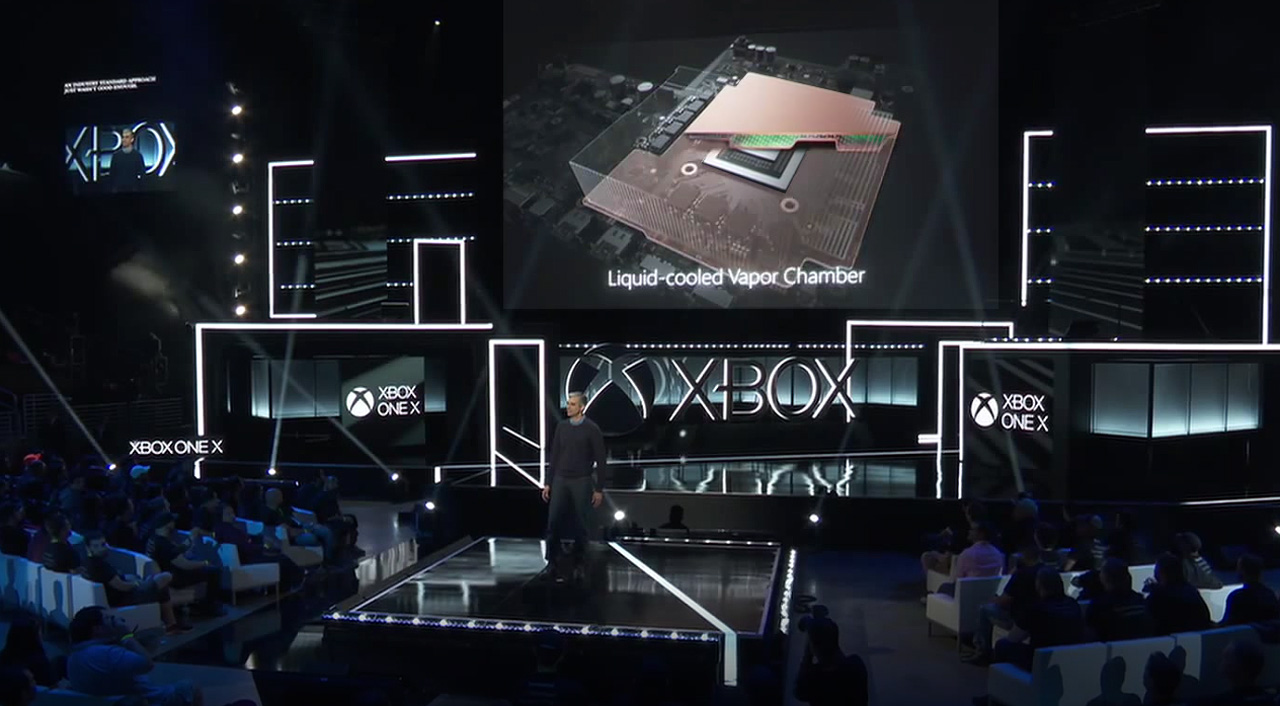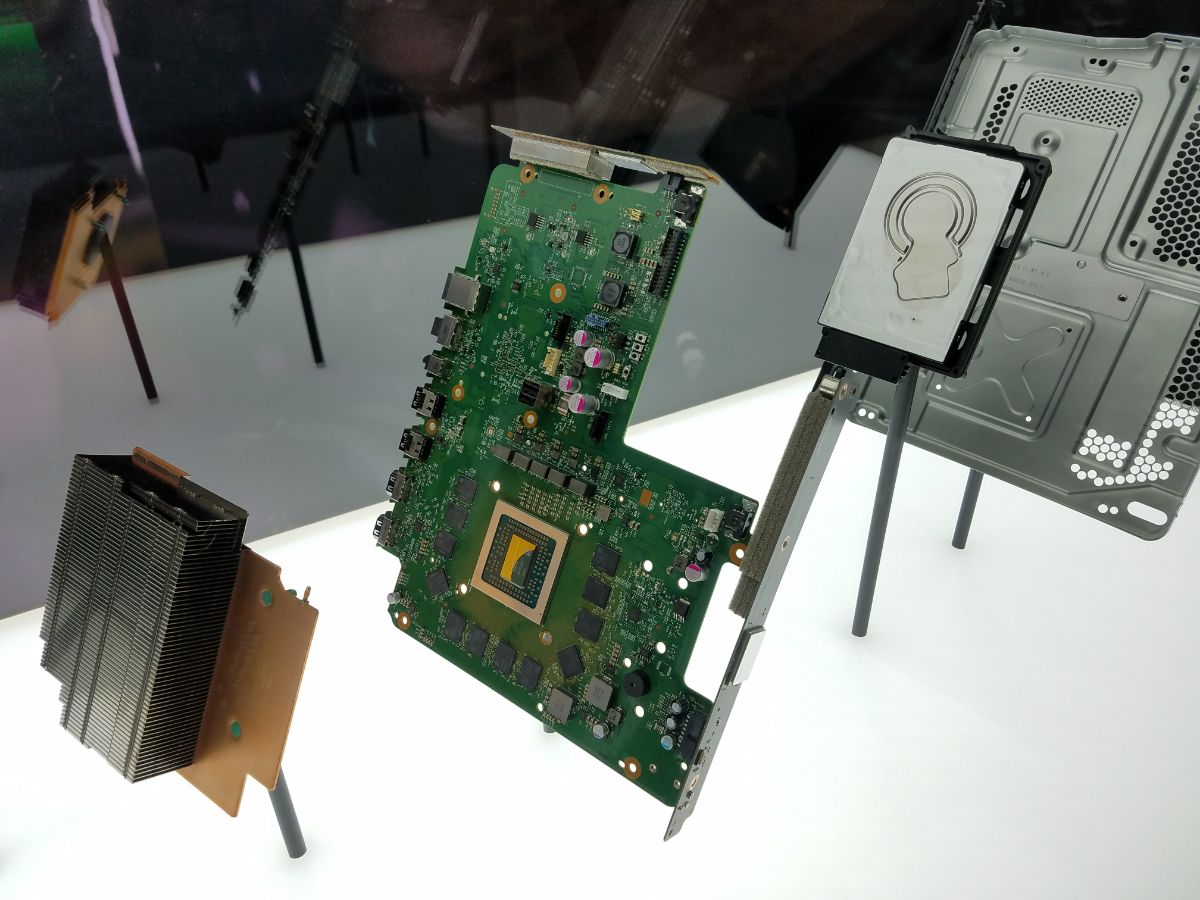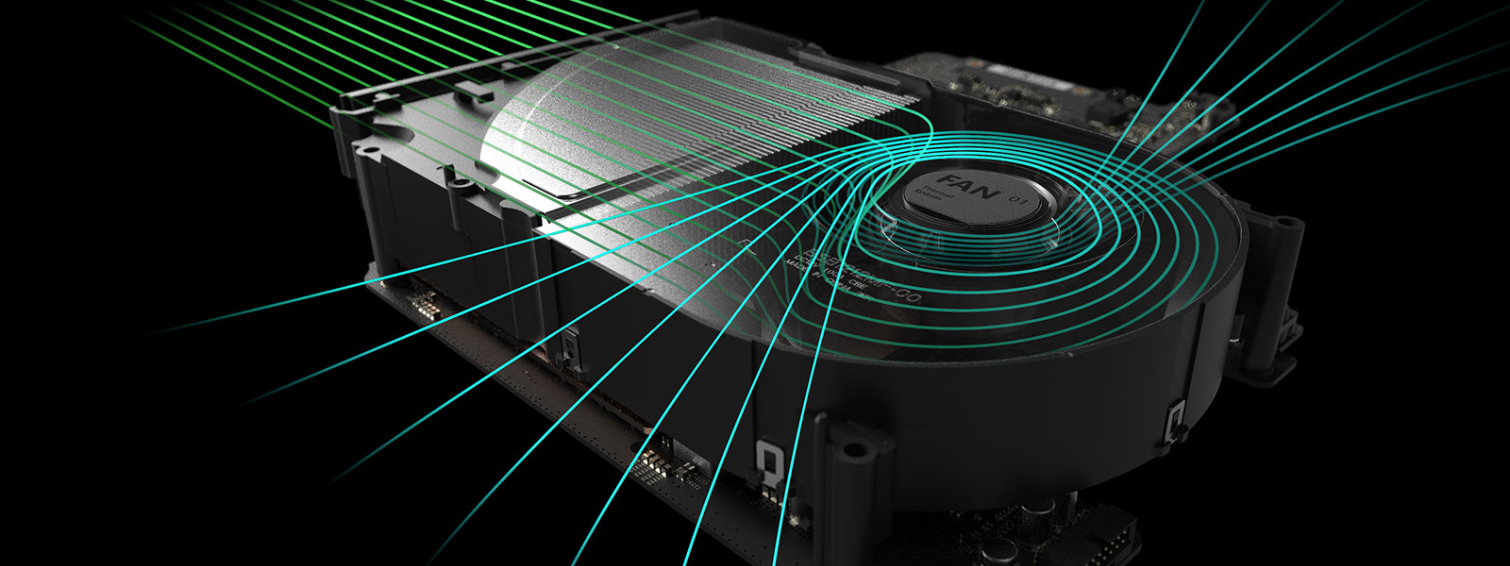The Xbox One X Is (Not) 'Liquid Cooled'
There seems to be a bit of confusion about the new vapor chamber cooler used in the Xbox One X. The internet is abuzz with talk of the "liquid cooled" Xbox One X, and this is due in part to the marketing speak used by Microsoft on stage during the Xbox E3 briefing. Although the term "liquid cooled" may be technically accurate, that terminology can be confusing at best, and extremely misleading at worst. Allow us to explain.
The Xbox One X is not liquid cooled in a traditional sense. When you think of something as being "liquid cooled," the average person pictures an all-in-one cooler or an enthusiast water cooling loop with a water block, radiator, and pump. This form of cooling is the preferred method of heat removal for highly overclocked processors and GPUs that generate enormous amounts of heat. That’s not what’s being used in the Xbox One X.
Simply put, there is nothing "new" about vapor chamber coolers at all. The fact is, this type of cooler has been used for more than a decade to cool blade servers and high-end graphics cards and, even though a vapor chamber cooler does contain a small amount of fluid, it is still more of a heatsink than a water cooling system. Today, the most common use of vapor chamber technology is found in the heatpipes of your CPU / GPU heatsink. They are inexpensive, easy to form into various shapes, and provide superior thermal performance compared to traditional solid metal heat spreaders.
The vapor chamber cooler used in the Xbox One X uses what is known as a two-piece design consisting of upper and lower stamped plates sandwiched together to create a chamber with a sintered wick material on the inner walls. This design allows for complex shapes to be molded into the base plate to enable direct contact with the Xbox One X core and memory chips while heatsink fins are attached to the smooth upper plate.
Coolant, usually in the form of deionised water, is added to the chamber and then vacuum sealed. This causes the wicking material to evenly distribute the fluid throughout the chamber. Once applied to a heat source, the liquid turns to vapor and moves to an area of lower pressure where it dissipate its heat load and returns to liquid form. The cooled liquid then moves back to the heat source by virtue of capillary action and the process repeats itself. As a result, this method of cooling provides evenly spread temperatures across all of its mating surfaces, regardless of the location and density of the heat source.




As you can see, the two methods are quite different, even though they can technically be referred to as “liquid cooling.”
With all that said, the vapor chamber cooler on display at E3 looks robust and, even though we haven’t had a chance to test the new Xbox One X yet, it should definitely handle greater heat loads than a traditional heatsink and fan combinations used in the past.
Get Tom's Hardware's best news and in-depth reviews, straight to your inbox.
Steven Lynch is a contributor for Tom’s Hardware, primarily covering case reviews and news.
-
urbanj I, for one, appreciate that the folks at Tom's have released this article to help those who only seem to understand certain KEY words in headlines, and then ignore everything written afterwards.Reply
At the very least, this article headline should balance things back to zero :P -
aisalem So in your explanation you've just explained that it is indeed liquid cooled :)Reply
The only difference you should point out that in more traditional liquid cooling system you need a pump and tubing to move the coolant around, while in vapor chamber you're using phase changes to move it. -
synphul Reply19813376 said:So in your explanation you've just explained that it is indeed liquid cooled :)
The only difference you should point out that in more traditional liquid cooling system you need a pump and tubing to move the coolant around, while in vapor chamber you're using phase changes to move it.
Do you consider a 212 evo or other similar cpu 'air coolers' to be 'liquid' cooled? Same thing as what's being used here with a slightly different shape. Traditionally heat pipes aren't called 'water cooled' or considered to be water cooling. Rarely do they even use the term 'vapor chamber' in conjunction with heat pipes, they just say 'heat pipes'. That's what they are though, sealed pipes with sintered material containing a few drops of water inside. Aside from a few really low budget low performance air coolers almost all air coolers use heat pipes now as well as gpu's. -
turkey3_scratch Reply19813791 said:What if I sit the XBOX X vertically?
Has nothing to do with the cooling, the liquid is in pipes. -
alextheblue Reply
Well, it's not a completely insane question... some people still remember oldschool cheap heatpipes without a wicking material, where orientation could have a noticeable effect.19813851 said:19813791 said:What if I sit the XBOX X vertically?
Has nothing to do with the cooling, the liquid is in pipes.
Anyway this sort of vapor chamber works great with high-watt graphics cards, it's nice to see them use it here - should keep the SoC running cool! -
mitch074 I think one easy way to differentiate a vapor chamber from a cooling loop is the presence of a pump. No pump = heat pipe. Pump = liquid cooling.Reply -
alextheblue Reply
What external power brick? I'm pretty sure aircooling will be sufficient for the internal PSU, since it's ~245W.19815696 said:But is there liquid cooling in the giant external power brick? -
aisalem Reply19813538 said:19813376 said:So in your explanation you've just explained that it is indeed liquid cooled :)
The only difference you should point out that in more traditional liquid cooling system you need a pump and tubing to move the coolant around, while in vapor chamber you're using phase changes to move it.
Do you consider a 212 evo or other similar cpu 'air coolers' to be 'liquid' cooled? Same thing as what's being used here with a slightly different shape. Traditionally heat pipes aren't called 'water cooled' or considered to be water cooling. Rarely do they even use the term 'vapor chamber' in conjunction with heat pipes, they just say 'heat pipes'. That's what they are though, sealed pipes with sintered material containing a few drops of water inside. Aside from a few really low budget low performance air coolers almost all air coolers use heat pipes now as well as gpu's.
Let's take a breath and look at the article title, it states "liquid cooled". Vapor chamber, heat pipes and big loops are all using some kind of liquid and the devices using coolers based on those principles can be called "liquid cooled". In big PC cases you need pumps and long hoses to move the heat to the radiators that needs to be father away. Here MS used vapor chamber to make the heat transfer more efficient on the big surface that has components with different height. It's smart decision and it's liquid cooled system just in more compact enclosure, you cannot deny that.
Don't take me wrong I used to have fully custom liquid cooling system for my PC but I gave it away to friend as it's pretty useless for nowadays CPUs and just generating more noise than big heat pipe coolers (I'm actually using 212 Evo now :))
And heat pipes are not the same as vapor chamber, they do use the same principle but are not the same, similar to water cooling system :)
